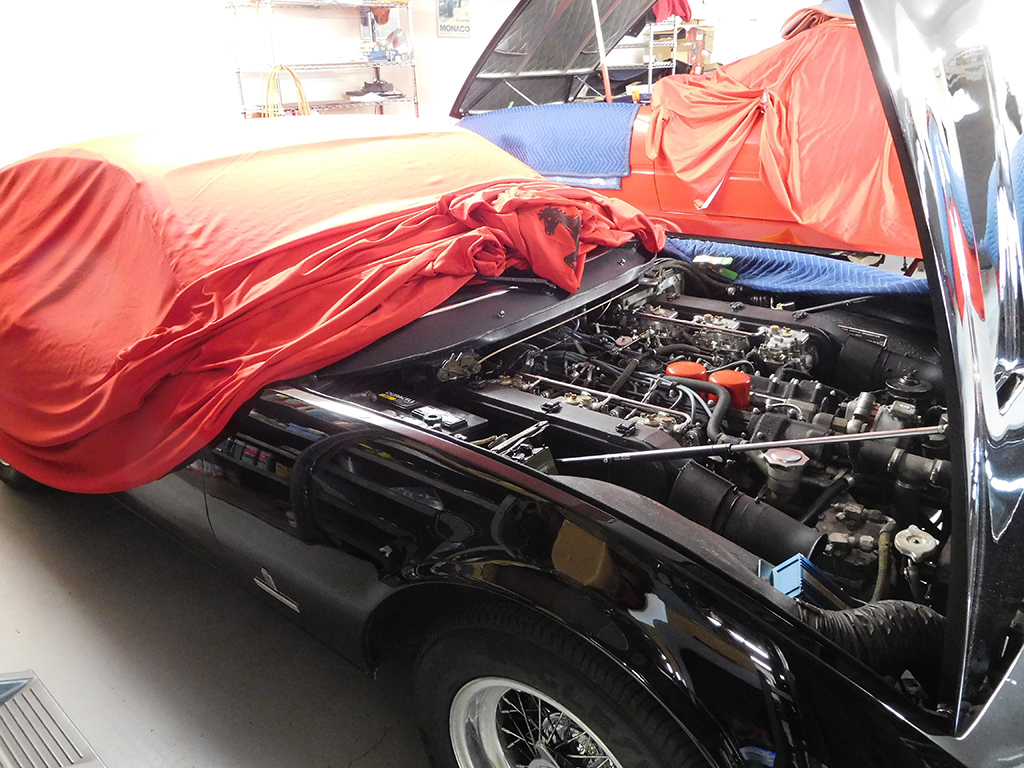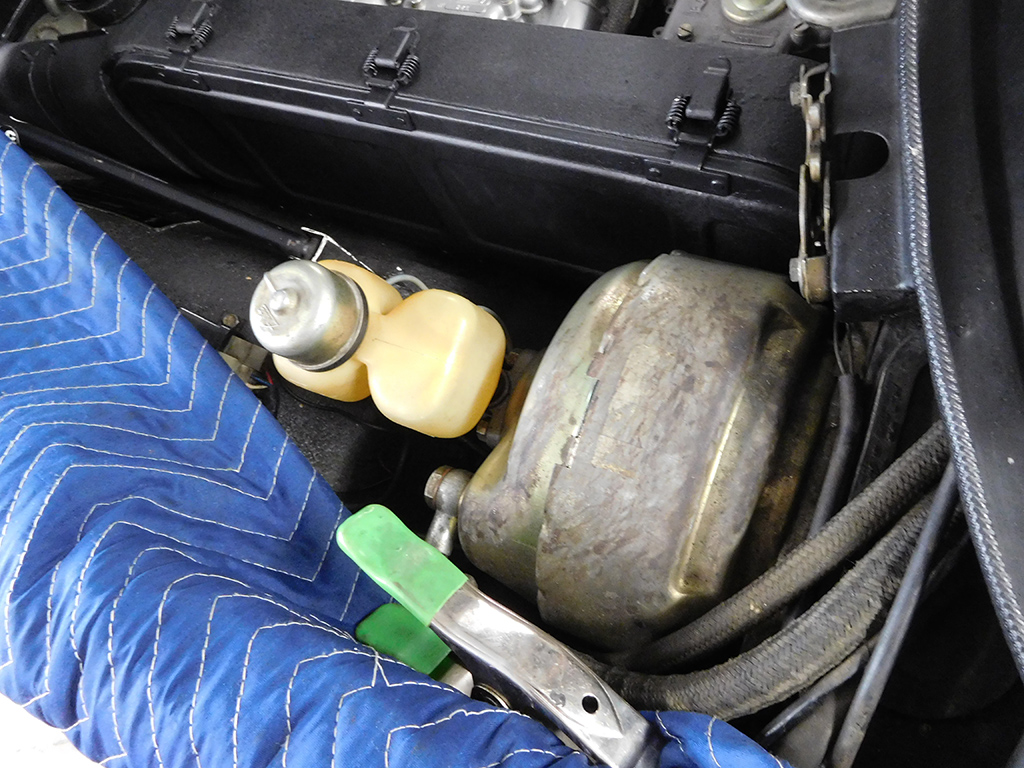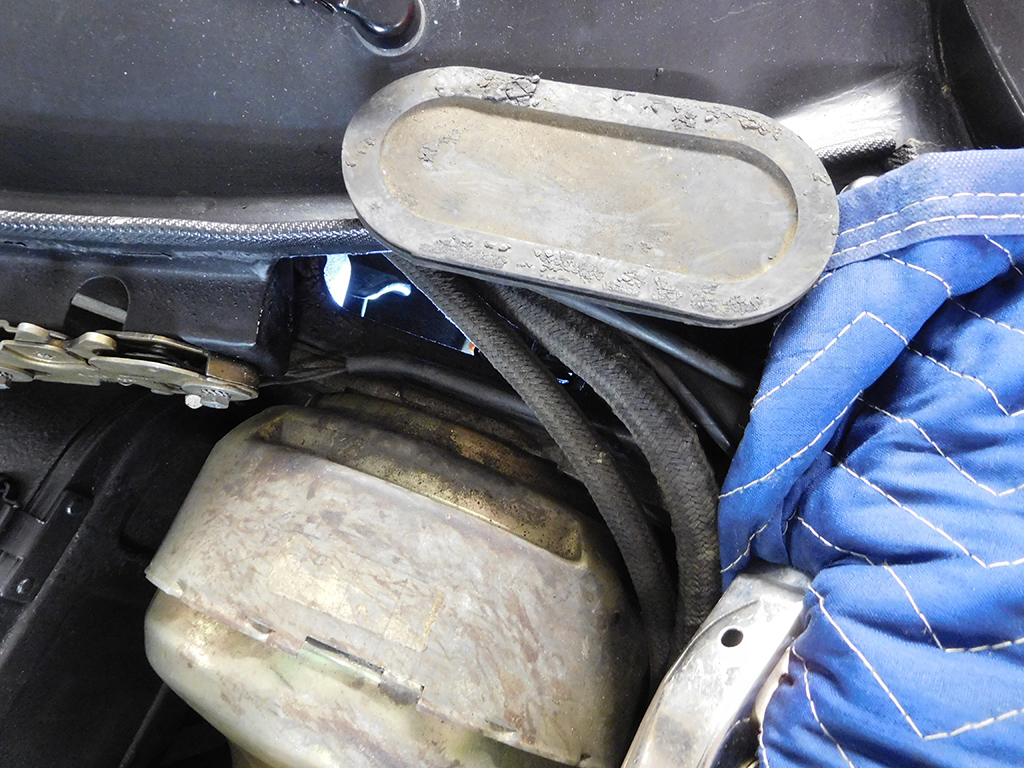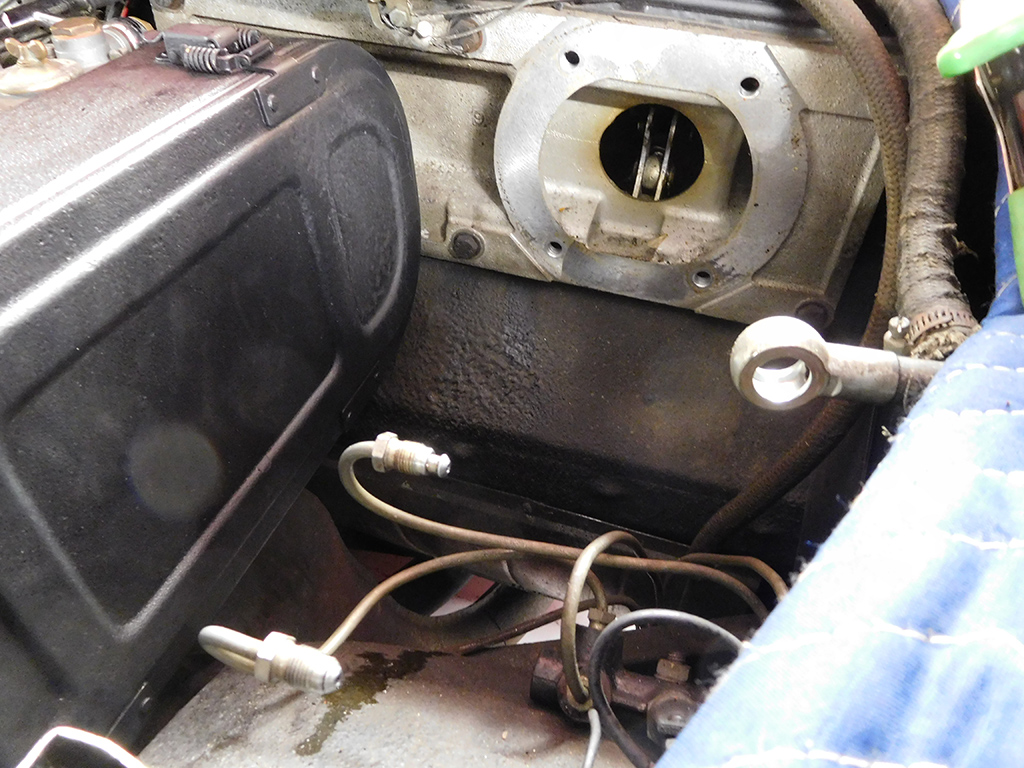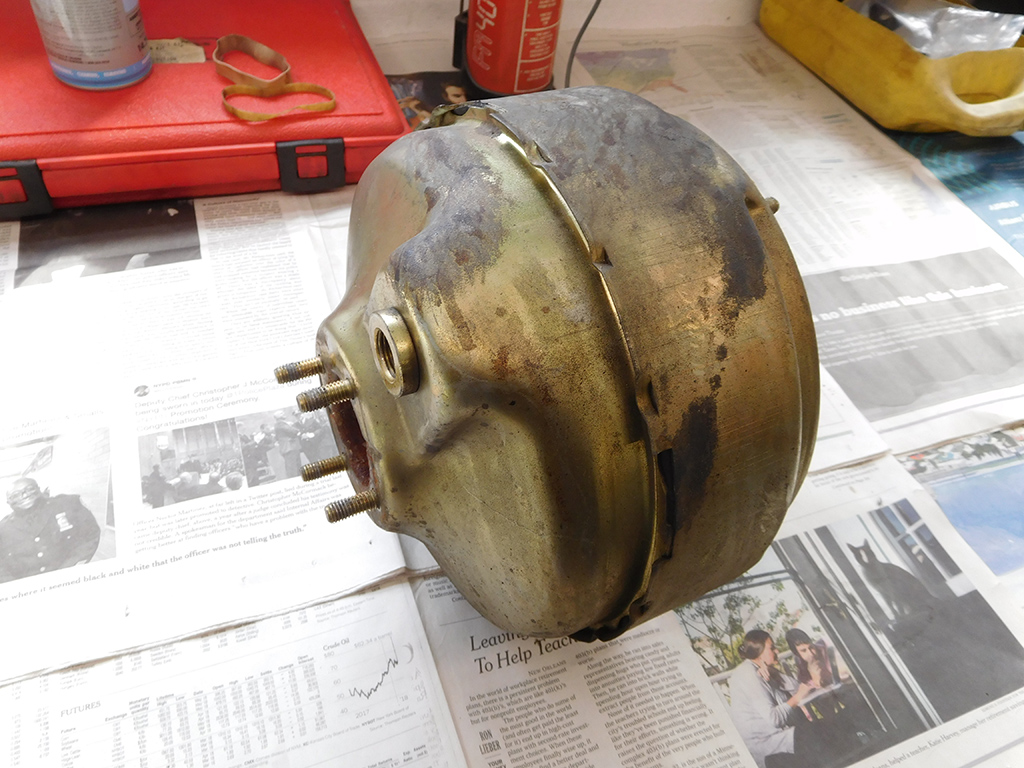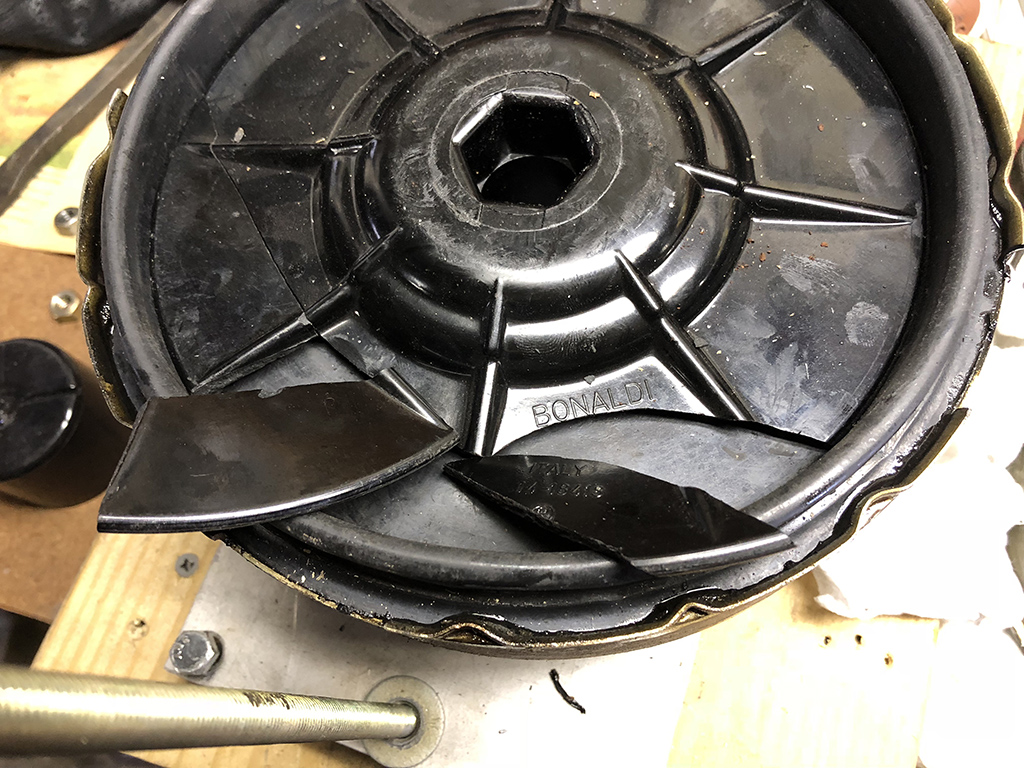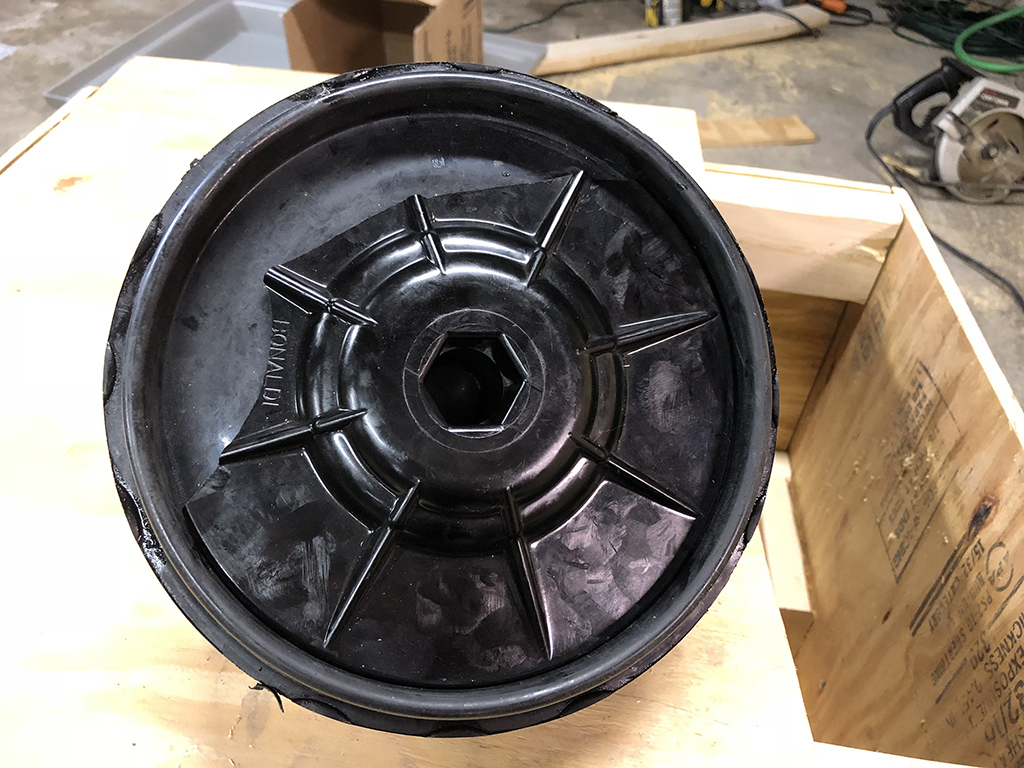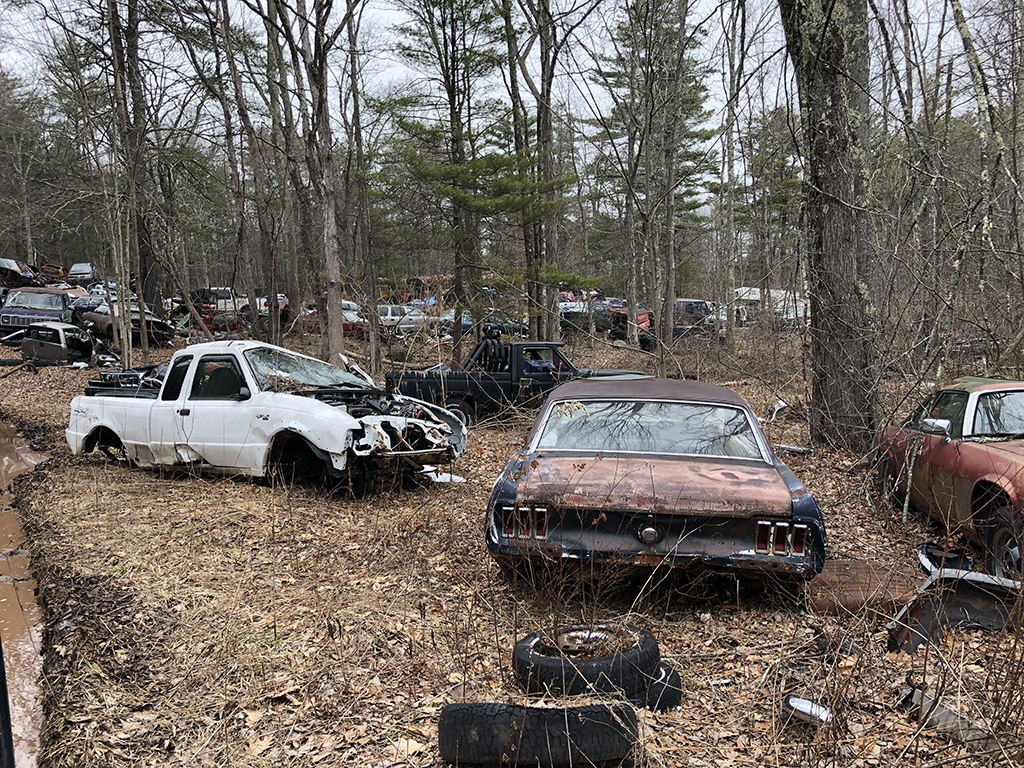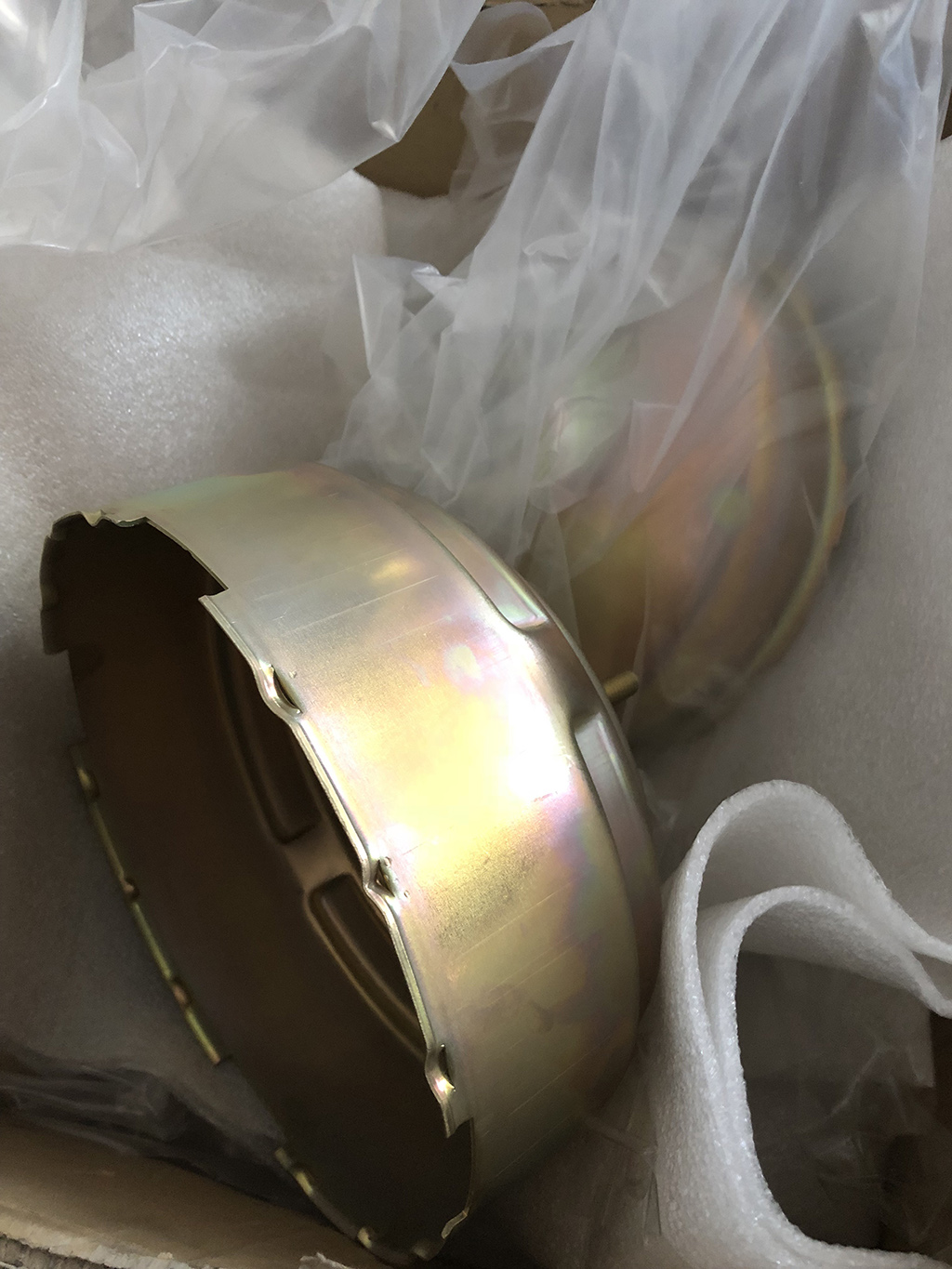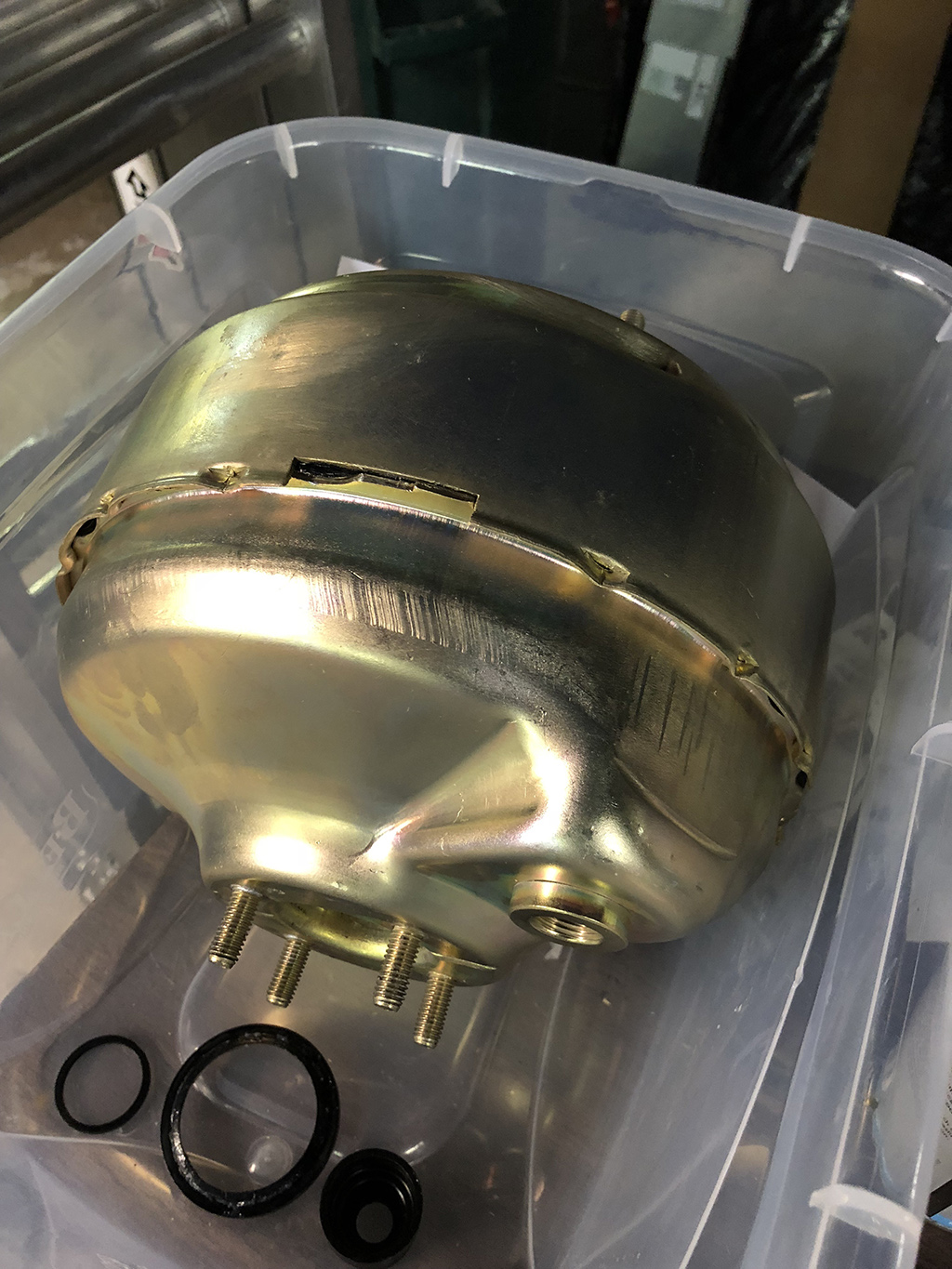365GTC/4 Brakes
After test driving the Ferrari 365GTC/4, I really wasn’t happy about the brakes. They didn’t seem to have power boost all the time. The owner asked me to take a closer look, so I dove into the unknown!
I have not pulled a booster out of the 365GTC/4 before, and I was hoping it wasn’t going to be as bad with the access as other things on this car. Other cars from this era, like a Daytona, aren’t too bad, but I was going to find out soon enough!
Looking under the dash, I could have reasonable access to two of the four nuts that secured the brake booster to the firewall, but the third one was going be be a little harder and the fourth one was going to impossible to remove from under the dash!
I looked around the engine compartment and found an access hole and rubber grommet to access the nuts on the booster! I was actually shocked that Ferrari provided this convenient hole for me. This was going to be a breeze!
I managed to get the booster, brake master cylinder and reservoirs out without too much trouble. Who knew?!
As soon as I had the booster on the work bench, I knew something was wrong when I discovered something loose rattling inside the booster.
After I opened the booster, I found the loose pieces. The rear section of the booster had broken.
The loose pieces may have been interfering with the level of movement inside the booster and affecting the efficiency of the brakes. Now I’ll have to find a replacement!
Working on these old cars is really a challenge, especially when vendors are closing up shop left and right or retiring. I’ve had to learn how to rebuild certain parts to Vintage Ferraris simply because I can’t find good vendors to do the job right. I can rebuild these Bendix boosters fairly well when I can get my hands on the seal kits, but when I need to source a broken part, that’s a problem. Luckily, I can get this part in billet aluminum, but it’s $$$. I wanted to see if I could find another source.
A friend of mine told me that these Bendix boosters were used on other cars from that same era, and even though the bolt patterns and master cylinder connections might not be the same, the internals may work. I decided to stop in a local junk yard to take a look.
There are a couple of secret junk yards in my area that have cars from the 70s, but they’re pretty rotted out. I managed to find one that had the correct booster, but it looked pretty rough. I wouldn’t know if the internals were salvageable until I took it home and got it apart. 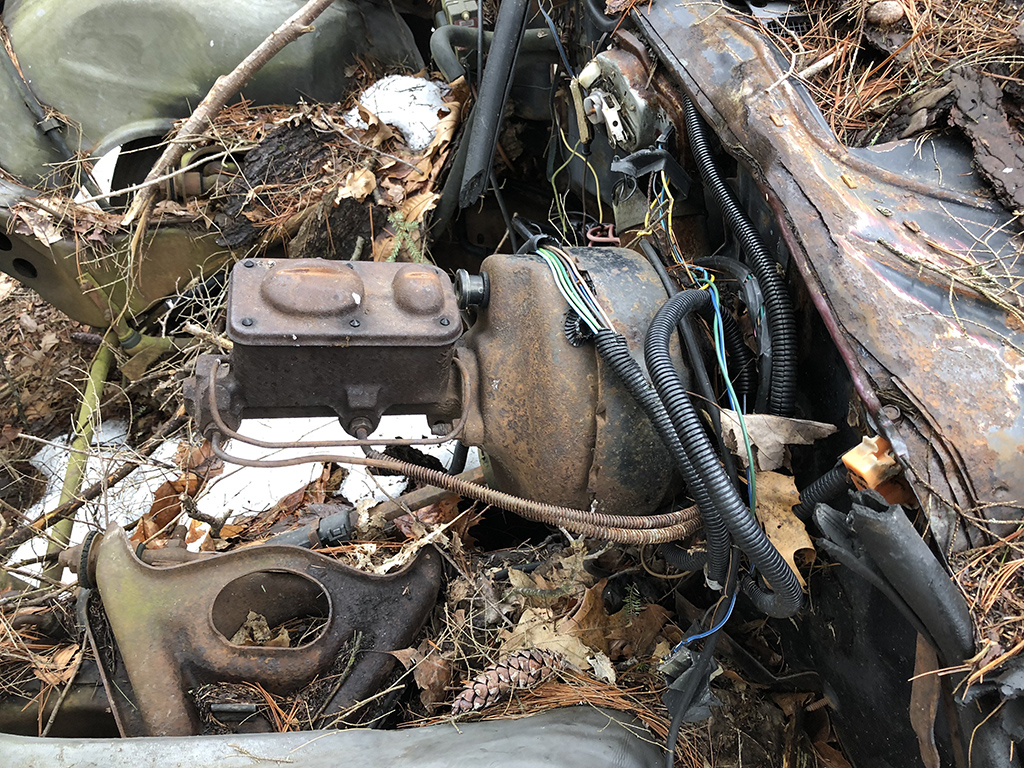
Getting this rusty unit out of the car, bringing it home, disassembling it, hoping there are salvageable parts, and matching it up to the parts I have in the Ferrari booster seemed like a real shot in the dark. That $$$ option is looking pretty good!
Speaking of rebuilding boosters, I’ve been working at learning how to rebuild a couple of types of brake boosters for Vintage Ferraris now for a few years. It’s been a long learning process, and each step has had its share of struggle. Getting the plating right has been a big problem, and I seemed to have finally found the right process with my plater. Gold Cadmium Plating is not very common and there is a particular iridescence that is hard to get right. How the surface is prepped, how long it’s left in the plating tanks, how long it’s left in the dye, all affect how the final looks.
After a few years working with my plater, it looks like we have something I am proud to put on a Ferrari!


